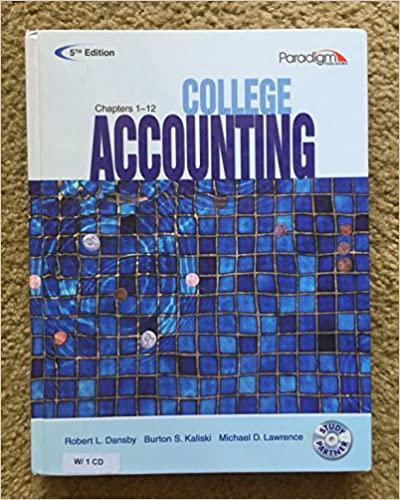Answered step by step
Verified Expert Solution
Question
1 Approved Answer
Estimating and Recording Bad Debt Estimates and Write - Offs; Reporting of Accounts Receivable d . For reporting purposes in looking at part b ,
Estimating and Recording Bad Debt Estimates and WriteOffs; Reporting of Accounts Receivable d For reporting purposes in looking at part what is one limitation when using assumption and when using assumption
Note: Do not use negative signs with any of your answers.
d
Limitation of Assumption
Limitation of Assumption
Rarely acceptable under GAAP.
At December its annual yearend, the accounts of Sun Systems Inc. show the following.
$ in sales revenue for the year, of which onesixth was on account.
$ credit balance in Allowance for Doubtful Accounts, as of December of the prior year.
$ debit balance in Accounts Receivable as of December of the current year prior to any writeoffs
of uncollectible accounts during the current year
$ in uncollectible accounts to be written off as of December of the current year.
Aging schedule at December of the current year, showing the following breakdown of total accounts receivable
excluding amounts to be written off.
Required
a Prepare the entry to write off the uncollectible accounts.
Bad debt expense is based on of credit sales.
Allowance for doubtful accounts is based on of total receivables at yearend.
Allowance for doubtful accounts is based on the following aging schedule: Not past due, ; Past
due days, ; and Past due over days,
Bad debt expense is based on the direct writeoff method assume entry in part a has not been recorded
allowance for doubtful accounts on December of the prior year.
d For reporting purposes in looking at part b what is one limitation when using assumption and when using assumption

Step by Step Solution
There are 3 Steps involved in it
Step: 1

Get Instant Access to Expert-Tailored Solutions
See step-by-step solutions with expert insights and AI powered tools for academic success
Step: 2

Step: 3

Ace Your Homework with AI
Get the answers you need in no time with our AI-driven, step-by-step assistance
Get Started


